A Comprehensive Guide to the Analog Devices Inc. 5962-87701022A Digital to Analog Converter (DAC)
30mW μW DAC Current - Unbuffered Surface Mount R-2R R 1 B B
Unit Price: $114.668091
Ext Price: $114.67









30mW μW DAC Current - Unbuffered Surface Mount R-2R R 1 B B
This technical article provides a detailed overview of the Analog Devices Inc. 5962-87701022A Digital to Analog Converter (DAC). We will explore its features, applications, reference designs, alternative parts, and answer frequently asked questions about this product. Whether you are an electronic engineer or a hobbyist, this article will help you understand the capabilities and potential applications of this DAC.
Product Introduction
1. Description:
The Analog Devices Inc. 5962-87701022A is a high-performance Digital to Analog Converter (DAC) that offers 8-bit resolution and operates with a supply voltage range of 5V to 15V. It features a parallel data interface and an external reference type. The DAC utilizes an R-2R architecture and provides two independent converters in a 20-CLCC surface mount package. With a sampling rate of 5.6 Msps and a settling time of 400ns, this DAC is suitable for a wide range of applications.
2. Features:
- 8-bit resolution: The DAC provides a resolution of 8 bits, allowing for precise control over analog output signals.
- High-speed operation: With a sampling rate of 5.6 Msps, this DAC can handle fast data conversion requirements.
- Parallel data interface: The parallel data interface simplifies the integration of the DAC into existing systems.
- Wide supply voltage range: The DAC operates with a supply voltage range of 5V to 15V, providing flexibility in various power supply configurations.
- Low settling time: The settling time of 400ns ensures rapid and accurate conversion of digital signals to analog outputs.
3. Applications:
The Analog Devices Inc. 5962-87701022A DAC finds applications in various industries and electronic systems. Here are some primary and secondary applications where this DAC can be utilized:
Primary Applications:
- Audio systems: The DAC can be used in audio systems to convert digital audio signals into analog audio output, enabling high-quality sound reproduction.
- Instrumentation: This DAC is suitable for precision measurement instruments, providing accurate analog outputs for data acquisition and control systems.
- Communications: The DAC can be used in communication systems for signal modulation, demodulation, and frequency synthesis applications.
- Industrial automation: The DAC finds applications in industrial automation systems for controlling analog actuators and sensors.
Secondary Applications:
- Test and measurement equipment: The DAC can be integrated into test and measurement equipment for generating precise analog signals for calibration and testing purposes.
- Automotive electronics: This DAC can be used in automotive electronics for audio systems, sensor calibration, and control applications.
- Medical devices: The DAC is suitable for medical devices that require accurate analog outputs, such as patient monitoring systems and diagnostic equipment.
Applicable Specific Modules:
- Audio DAC module: The Analog Devices Inc. 5962-87701022A can be integrated into audio DAC modules to provide high-quality analog audio outputs.
- Data acquisition module: This DAC can be used in data acquisition modules for converting digital sensor data into analog signals for further processing.
4. Reference Designs:
Analog Devices Inc. provides several reference designs that utilize the 5962-87701022A DAC. Some notable reference designs include:
- Audio DAC reference design: This design demonstrates the integration of the DAC into an audio system, showcasing its performance in delivering high-quality audio outputs.
- Industrial control reference design: This reference design showcases the DAC's capabilities in industrial control applications, providing precise analog control signals for actuators and sensors.
5. Alternative Parts:
In case the Analog Devices Inc. 5962-87701022A DAC is not available or does not meet specific requirements, here are some alternative parts that can be considered:
- Texas Instruments DAC0808: This 8-bit DAC offers similar features and performance, making it a suitable alternative for various applications.
- Maxim Integrated MAX512: The MAX512 is an 8-bit DAC with a serial interface, providing an alternative option for applications that require serial data communication.
6. FAQs:
Q1: Is the Analog Devices Inc. 5962-87701022A DAC RoHS compliant?
A1: No, this DAC is non-RoHS compliant and contains lead.
Q2: What is the maximum supply voltage for this DAC?
A2: The maximum supply voltage for the 5962-87701022A DAC is 15V.
Q3: Can this DAC be used with a single-ended output?
A3: No, this DAC provides a current-unbuffered differential output.
Q4: What is the qualification status of this DAC?
A4: The 5962-87701022A DAC is qualified and in production.
Specifications
- TypeParameter
- Factory Lead Time10 Weeks
- Lifecycle Status
Lifecycle Status refers to the current stage of an electronic component in its product life cycle, indicating whether it is active, obsolete, or transitioning between these states. An active status means the component is in production and available for purchase. An obsolete status indicates that the component is no longer being manufactured or supported, and manufacturers typically provide a limited time frame for support. Understanding the lifecycle status is crucial for design engineers to ensure continuity and reliability in their projects.
PRODUCTION (Last Updated: 2 weeks ago) - Package / Case
refers to the protective housing that encases an electronic component, providing mechanical support, electrical connections, and thermal management.
20-CLCC - Surface Mount
having leads that are designed to be soldered on the side of a circuit board that the body of the component is mounted on.
YES - Mounting Type
The "Mounting Type" in electronic components refers to the method used to attach or connect a component to a circuit board or other substrate, such as through-hole, surface-mount, or panel mount.
Surface Mount - Contact Plating
Contact plating (finish) provides corrosion protection for base metals and optimizes the mechanical and electrical properties of the contact interfaces.
Lead, Tin - Number of Pins20
- Usage LevelMilitary grade
- Operating Temperature
The operating temperature is the range of ambient temperature within which a power supply, or any other electrical equipment, operate in. This ranges from a minimum operating temperature, to a peak or maximum operating temperature, outside which, the power supply may fail.
-55°C~125°C - JESD-609 Code
The "JESD-609 Code" in electronic components refers to a standardized marking code that indicates the lead-free solder composition and finish of electronic components for compliance with environmental regulations.
e4 - Pbfree Code
The "Pbfree Code" parameter in electronic components refers to the code or marking used to indicate that the component is lead-free. Lead (Pb) is a toxic substance that has been widely used in electronic components for many years, but due to environmental concerns, there has been a shift towards lead-free alternatives. The Pbfree Code helps manufacturers and users easily identify components that do not contain lead, ensuring compliance with regulations and promoting environmentally friendly practices. It is important to pay attention to the Pbfree Code when selecting electronic components to ensure they meet the necessary requirements for lead-free applications.
no - Part Status
Parts can have many statuses as they progress through the configuration, analysis, review, and approval stages.
Active - Moisture Sensitivity Level (MSL)
Moisture Sensitivity Level (MSL) is a standardized rating that indicates the susceptibility of electronic components, particularly semiconductors, to moisture-induced damage during storage and the soldering process, defining the allowable exposure time to ambient conditions before they require special handling or baking to prevent failures
1 (Unlimited) - Number of Terminations20
- Terminal Finish
Terminal Finish refers to the surface treatment applied to the terminals or leads of electronic components to enhance their performance and longevity. It can improve solderability, corrosion resistance, and overall reliability of the connection in electronic assemblies. Common finishes include nickel, gold, and tin, each possessing distinct properties suitable for various applications. The choice of terminal finish can significantly impact the durability and effectiveness of electronic devices.
Gold (Au) - Max Power Dissipation
The maximum power that the MOSFET can dissipate continuously under the specified thermal conditions.
30mW - Terminal Position
In electronic components, the term "Terminal Position" refers to the physical location of the connection points on the component where external electrical connections can be made. These connection points, known as terminals, are typically used to attach wires, leads, or other components to the main body of the electronic component. The terminal position is important for ensuring proper connectivity and functionality of the component within a circuit. It is often specified in technical datasheets or component specifications to help designers and engineers understand how to properly integrate the component into their circuit designs.
QUAD - Number of Functions2
- Supply Voltage
Supply voltage refers to the electrical potential difference provided to an electronic component or circuit. It is crucial for the proper operation of devices, as it powers their functions and determines performance characteristics. The supply voltage must be within specified limits to ensure reliability and prevent damage to components. Different electronic devices have specific supply voltage requirements, which can vary widely depending on their design and intended application.
5V - Base Part Number
The "Base Part Number" (BPN) in electronic components serves a similar purpose to the "Base Product Number." It refers to the primary identifier for a component that captures the essential characteristics shared by a group of similar components. The BPN provides a fundamental way to reference a family or series of components without specifying all the variations and specific details.
AD7528 - Pin Count
a count of all of the component leads (or pins)
20 - Qualification Status
An indicator of formal certification of qualifications.
Qualified - Output Type
The "Output Type" parameter in electronic components refers to the type of signal or data that is produced by the component as an output. This parameter specifies the nature of the output signal, such as analog or digital, and can also include details about the voltage levels, current levels, frequency, and other characteristics of the output signal. Understanding the output type of a component is crucial for ensuring compatibility with other components in a circuit or system, as well as for determining how the output signal can be utilized or processed further. In summary, the output type parameter provides essential information about the nature of the signal that is generated by the electronic component as its output.
Current - Unbuffered - Max Supply Voltage
In general, the absolute maximum common-mode voltage is VEE-0.3V and VCC+0.3V, but for products without a protection element at the VCC side, voltages up to the absolute maximum rated supply voltage (i.e. VEE+36V) can be supplied, regardless of supply voltage.
15V - Min Supply Voltage
The minimum supply voltage (V min ) is explored for sequential logic circuits by statistically simulating the impact of within-die process variations and gate-dielectric soft breakdown on data retention and hold time.
5V - Number of Bits8
- Architecture
In electronic components, the parameter "Architecture" refers to the overall design and structure of the component. It encompasses the arrangement of internal components, the layout of circuitry, and the physical form of the component. The architecture of an electronic component plays a crucial role in determining its functionality, performance, and compatibility with other components in a system. Different architectures can result in variations in power consumption, speed, size, and other key characteristics of the component. Designers often consider the architecture of electronic components carefully to ensure optimal performance and integration within a larger system.
R-2R - Converter Type
The parameter "Converter Type" in electronic components refers to the classification of devices that convert one form of energy or signal to another. This includes devices such as analog-to-digital converters (ADCs), digital-to-analog converters (DACs), and various types of signal converters used in communication, power management, and measurement systems. Each converter type is designed to facilitate the manipulation or transformation of signals to meet specific application requirements. The choice of converter type typically depends on factors such as the signal characteristics, required accuracy, and conversion speed.
D/A CONVERTER - Reference Type
a code object that is not stored directly where it is created, but that acts as a kind of pointer to a value stored elsewhere.
External - Data Interface
A Data Interface in EDQ is a template of a set of attributes representing a given entity, used to create processes that read from, or write to, interfaces rather than directly from or to sources or targets of data.
Parallel - Differential Output
a differential output voltage in electronics is the difference between the values of two AC voltages, 180° out of phase, present at the output terminals of an amplifier when you apply a differential input voltage to the input terminals of an amplifier.
No - Resolution
Resolution in electronic components refers to the smallest increment of measurement or change that can be detected or represented by the component. It is a crucial specification in devices such as sensors, displays, and converters, as it determines the level of detail or accuracy that can be achieved. For example, in a digital camera, resolution refers to the number of pixels that make up an image, with higher resolution indicating a greater level of detail. In analog-to-digital converters, resolution is the number of discrete values that can be represented in the digital output, determining the precision of the conversion process. Overall, resolution plays a significant role in determining the performance and capabilities of electronic components in various applications.
1 B - Sampling Rate
often described in the context of signal processing as the number of samples per time.
5.6 Msps - Voltage - Supply, Analog
Voltage - Supply, Analog is a parameter in electronic components that specifies the range of voltage levels required to power the analog circuitry within the component. This parameter indicates the minimum and maximum voltage levels that the component can accept for proper operation of its analog functions. It is crucial to ensure that the voltage supplied to the component falls within this specified range to prevent damage and ensure optimal performance. Understanding and adhering to the "Voltage - Supply, Analog" parameter is essential for the proper functioning of analog circuits in electronic components.
5V~15V - Voltage - Supply, Digital
Voltage - Supply, Digital is a parameter that specifies the voltage level required to power the digital circuitry within an electronic component, such as an integrated circuit or a microcontroller. This parameter is crucial for ensuring proper operation of the digital components, as supplying the correct voltage level is essential for reliable performance. The specified voltage range typically includes both minimum and maximum values within which the component can operate safely and efficiently. It is important to adhere to the recommended voltage supply range to prevent damage to the component and to maintain the integrity of the digital signals being processed.
5V~15V - Settling Time
In control theory the settling time of a dynamical system such as an amplifier or other output device is the time elapsed from the application of an ideal instantaneous step input to the time at which the amplifier output has entered and remained within a specified error band.
400ns - Integral Nonlinearity (INL)
Integral Nonlinearity (INL) is a measure of the deviation of a transfer function from a straight line when considering the entire output range of a device, such as a digital-to-analog converter or an analog-to-digital converter. It is quantified as the maximum deviation of the actual output from the ideal output across the entire input range, expressed as a percentage of the full-scale output. INL indicates how closely the output follows a linear model, influencing the accuracy of the signal representation in electronic components. A lower INL value signifies better linearity and higher precision in signal processing applications.
0.5 LSB - Input Bit Code
"Input Bit Code" is a parameter used in electronic components, particularly in digital devices such as microcontrollers and integrated circuits. It refers to the binary code or sequence of bits that are used to represent input data or commands to the component. The input bit code is typically specified by the manufacturer and is used to configure the behavior or functionality of the component.In simpler terms, the input bit code is like a set of instructions that the electronic component understands and acts upon accordingly. By providing the correct input bit code, users can control the operation of the component and make it perform specific tasks or functions. Understanding and correctly using the input bit code is essential for proper operation and integration of electronic components in various electronic systems and applications.
BINARY, OFFSET BINARY - Number of Converters2
- Conversion Rate
the number of conversions divided by the total number of visitors.
5.6 Msps - INL/DNL (LSB)
INL (Integral Non-Linearity) and DNL (Differential Non-Linearity) are parameters used to quantify the accuracy and performance of analog-to-digital converters (ADCs) and digital-to-analog converters (DACs). INL refers to the maximum deviation of the actual transfer function of a converter from a perfect straight line, representing the overall accuracy of the converter. DNL measures the difference between the actual step size of the output and the ideal step size, indicating the uniformity of the quantization levels. Both parameters are expressed in least significant bits (LSB), providing a standardized measure of the errors relative to the converter's resolution.
±0.5 (Max), ±1 (Max) - RoHS Status
RoHS means “Restriction of Certain Hazardous Substances” in the “Hazardous Substances Directive” in electrical and electronic equipment.
Non-RoHS Compliant - Lead Free
Lead Free is a term used to describe electronic components that do not contain lead as part of their composition. Lead is a toxic material that can have harmful effects on human health and the environment, so the electronics industry has been moving towards lead-free components to reduce these risks. Lead-free components are typically made using alternative materials such as silver, copper, and tin. Manufacturers must comply with regulations such as the Restriction of Hazardous Substances (RoHS) directive to ensure that their products are lead-free and environmentally friendly.
Contains Lead
Parts with Similar Specs
- ImagePart NumberManufacturerPackage / CaseNumber of PinsSettling TimeIntegral Nonlinearity (INL)Min Supply VoltageSupply VoltageMax Supply VoltagePin CountView Compare
5962-87701022A
20-CLCC
20
400ns
0.5 LSB
5 V
5 V
15 V
20
LCC
20
600 ns
-
5 V
15 V
16.5 V
20
LCC
20
800 ns
0.375 LSB
4.5 V
5 V
16.5 V
20
LCC
20
2.5 μs
4 LSB
4.5 V
5 V
5.5 V
20
LCC
20
500 ns
0.5 LSB
5 V
5 V
15 V
20
Datasheet PDF
- Datasheets :
- PCN Assembly/Origin :
- ConflictMineralStatement :
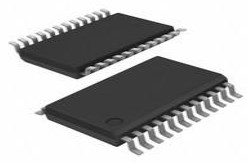 PCF8575 I/O Expander : Pinout, Schematic and Datasheet
PCF8575 I/O Expander : Pinout, Schematic and Datasheet19 August 20218436
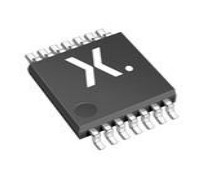 74HC10 Triple 3-input NAND Gate: Pinout, Equivalent and Datasheet
74HC10 Triple 3-input NAND Gate: Pinout, Equivalent and Datasheet17 November 20213871
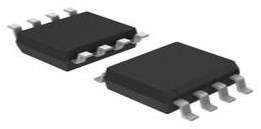 MIC2549A Programmable Current-Limit High-Side Switch: Pinout, Equivalent and Datasheet
MIC2549A Programmable Current-Limit High-Side Switch: Pinout, Equivalent and Datasheet24 March 2022524
 onsemi BSS84LT1G surprises in simple home electronics
onsemi BSS84LT1G surprises in simple home electronics18 August 2025140
 Introducing CY8C21334 Programmable System-on-Chip™ (PSoC®)
Introducing CY8C21334 Programmable System-on-Chip™ (PSoC®)29 February 2024113
 C2073 NPN Transistor: Datasheet, Pinout and Equivalent
C2073 NPN Transistor: Datasheet, Pinout and Equivalent02 November 202136263
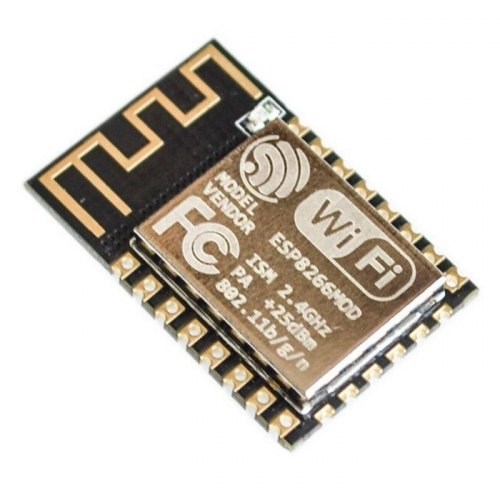 ESP12F: Ai-Thinker, Arduino, Pinout and Datasheet
ESP12F: Ai-Thinker, Arduino, Pinout and Datasheet09 March 20225629
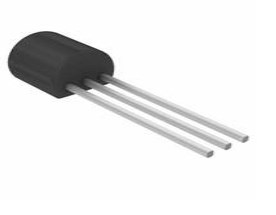 J105, JFET Transistor, Junction Field Effect: Datasheet, 3D Model, and Application
J105, JFET Transistor, Junction Field Effect: Datasheet, 3D Model, and Application19 January 20221524
 IOT-Based Anti-theft Handbag
IOT-Based Anti-theft Handbag29 August 20235319
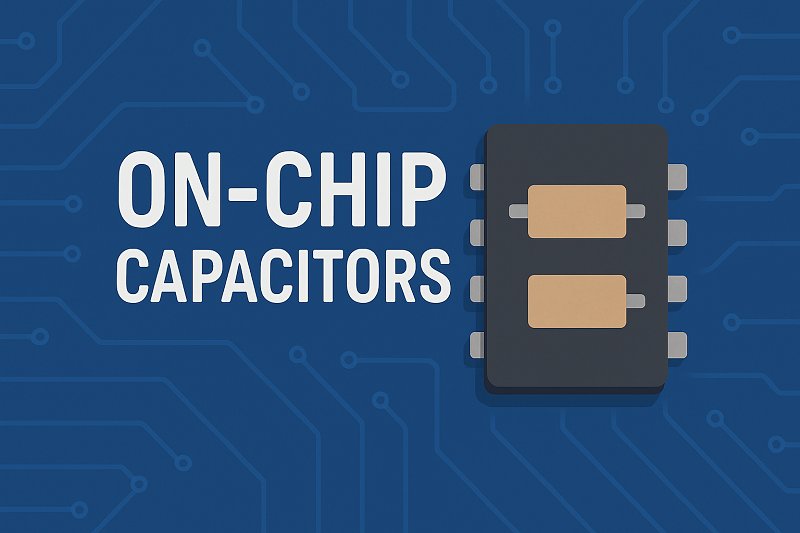 What is the Difference between MOM, MIM and MOS Capacitors?
What is the Difference between MOM, MIM and MOS Capacitors?17 April 202561743
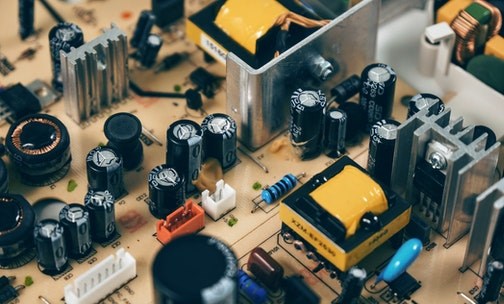 How to Design a High-precision ADC?
How to Design a High-precision ADC?13 December 20212031
 Global Ceramic Capacitors Market In-Depth Analysis to 2024
Global Ceramic Capacitors Market In-Depth Analysis to 202424 November 20234237
 NPN Transistors and PNP Transistors
NPN Transistors and PNP Transistors29 October 20207083
 Understanding the Flight Sensing Modules of Drones
Understanding the Flight Sensing Modules of Drones06 September 20211508
 Huawei's Mysterious Advanced Chip in New Mate 60 Pro Smartphone Sparks Speculation Amid US Sanctions
Huawei's Mysterious Advanced Chip in New Mate 60 Pro Smartphone Sparks Speculation Amid US Sanctions01 September 20231775
 How much do you know about HDMI Cable?
How much do you know about HDMI Cable?28 October 20213181
Analog Devices Inc.
In Stock: 2806
Minimum: 1 Multiples: 1
Qty
Unit Price
Ext Price
1
$114.668091
$114.67
10
$108.177444
$1,081.77
100
$102.054193
$10,205.42
500
$96.277540
$48,138.77
1000
$90.827868
$90,827.87
Not the price you want? Send RFQ Now and we'll contact you ASAP.
Inquire for More Quantity













